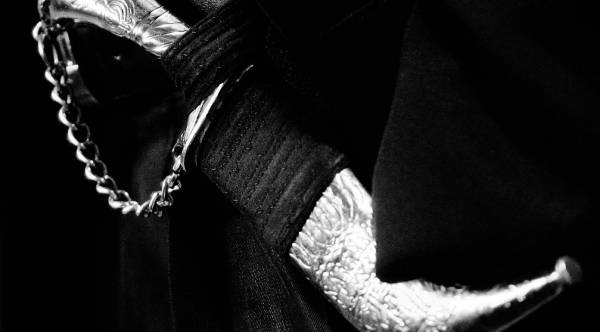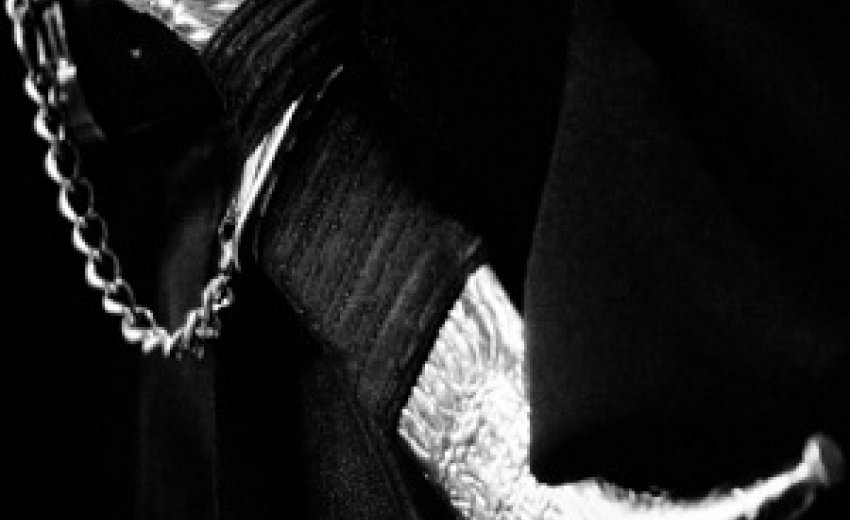If we properly respect more basic rights there is no need to grant special status to spiritual practices.

Dec 20, 2010: If it is safe enough for a Sikh child to wear a ceremonial dagger, or kirpan, to school, it should be safe enough for all children.
There's really no need to count freedom of religion separately among the civil liberties.
A culture and legal system that respects freedom of expression, freedom of association and assembly, and freedom of conscience, and that doesn't interfere with what people are doing so long as they are not harming others, will necessarily be a culture and legal system in which people are free to worship as they want.
Strangely, though, even as freedom of expression and the other basic civil liberties -- "basic" in that they can't be derived from others -- are under attack from various quarters, people are invoking freedom of religion in defending exemptions from law, and the courts are listening.
Courts have ruled that Orthodox Jews living in a multi-dwelling building may erect on a common balcony a sukkah, a small hut used during the holiday Sukkot. Other residents, though, must abide by the rule they themselves have set against erecting structures in common areas.
Courts have ruled that Sikh boys may wear small daggers, kirpans, to school. Other schoolchildren may not wear small daggers.
Muslim women may be veiled while testifying in court, at least so long as their religious belief is sincere enough, though neither men nor non-Muslims may.
Not always, certainly, do the courts or other authorities exempt religious people from the rules. They rarely exempt Catholic organizations from employment legislation, for instance.
The chance of gaining an exemption is best when the practice is part of a minority religion. The Supreme Court has ruled that Hutterites in Alberta who wish to drive on public roads must, like all other Albertans, have their photo on their driver's licence, even though the Hutterites say this requirement contravenes something in their religion.
The president of one of Canada's main civil liberties groups has criticized that decision as inconsistent with past decisions, including the first two I mentioned above, as well as with the guarantee of religious freedom in the Charter of Rights and Freedoms.
What an unfortunate position for a civil libertarian to take.
One would have thought that a liberty is for all of us, not just for those who claim special status. The correct civil libertarian position is to insist both that the laws apply to all of us equally and that the laws have no business telling us what to do unless serious harm is in the offing.
From a civil liberties perspective, the thing to do is to ask whether schoolchildren carrying sheathed knives in their clothing pose a serious risk of harm to their classmates or others. If they don't, then rules against their carrying knives are illegitimate, and any schoolchild who wants to carry one may, whether for religious reasons or not.
If building regulations against structures in common areas are illegitimate when it comes to sukkahs, then they are illegitimate when it comes to whatever a resident wants to construct there.
If requiring photos on licences serves no good purpose, then no one need have a picture on his or her licence.
If wearing a veil doesn't impede justice, then anyone may wear one.
The point is, we all have our own reasons for wanting to do what we want to do. Taking reasons of religion somehow to be special, to be weightier than other reasons, violates our equality as citizens.
Why is there, both officially and in everyday life, this deference to religion and religious sensibilities? Deference to religion is bound up, of course, with commitment to multiculturalist accommodation, especially when it comes to minority or exotic religions.
As Justice Louise Charron wrote, the argument against Sikh boys wearing kirpans is "disrespectful to believers in the Sikh religion and does not take into account Canadian values based on multiculturalism. ... If some students consider it unfair that Gurbaj Singh may wear his kirpan to school while they are not allowed to have knives in their possession, it is incumbent on the schools to discharge their obligation to instill [sic] in their students this value that is ... at the very foundation of our democracy."
What needs to be made clear is just how wrong-headed and, indeed, ugly these sentiments are to one who cares about equality and civil liberties.
Let's leave aside the fact that it's no business of the government whether we are disrespectful to each other's religions, as well as Justice Charron's call for schools to indoctrinate children. First, we have the looming spectre of government agents quizzing us about our beliefs in order to slot us correctly.
Second, religious leaders rarely have any sort of democratic legitimacy, and yet their views are the views the government will seek out as most authentic and defining of the community.
Third, and most importantly, while civil libertarians are concerned about us as individuals, about creating the spaces in which we as individuals (often, of course, as members of groups) can envision and pursue our good, deference to religion is an attitude that takes us first to be members of groups, and it doesn't much care about our political and social equality as individuals.
The stance of civil liberties groups amounts to a betrayal of the tradition of liberal equality and civil liberties. A person one would hope would stand against illiberal forms of multiculturalism appears, instead, to be a willing agent of them.
Mark Mercer is a professor in the department of philosophy at St. Mary's University. © Copyright (c) The Ottawa Citizen
----------------------------------|
Sunday, Dec 19, 2010: An Oregon law that had been on the books since the 1920s was repealed by the Legislature in last February’s special session. The law prohibited any public school teacher from wearing “any religious dress while engaged in the performance of his duties as a teacher.” We applauded the repeal, nervously. The law’s origins were offensive. The sponsors aimed at keeping Catholic priests or nuns from working in public schools. The push was led by a speaker of the House who was a functionary of the Ku Klux Klan, then fairly powerful in Oregon. Over the years, though, occasional efforts to kill the law were resisted for honorable reasons having nothing to do with its nefarious origins. Many people felt that prohibiting religious dress helped discourage proselytizing in the schools and helped protect the schools’ religious neutrality. Public schools are not supposed to encourage or discourage any denomination, or religion itself. But in 2009 the Legislature adopted the Oregon Workplace Religious Freedom Act, which allows workers to wear religious garb under most circumstances and to observe their holy days. The law made an exception for teachers, who were still covered by the old religious dress prohibition. It seemed unfair for teachers to be singled out as the only group of workers not covered by the new religious freedom statute. That feeling led to last February’s repeal. We support that change, but with a reservation: Let’s find out how the new law works in practice before giving it a permanent blessing. State Labor Commissioner Brad Avakian and Superintendent of Public Instruction Susan Castillo earlier this month jointly announced the creation of a model policy for schools to deal with religious dress issues. Castillo said: “This model policy provides our schools with guidance on how to allow teachers and other school staff the freedom to express their religious beliefs through dress while maintaining the religious neutrality of our learning environments.” The two-page policy statement says district employees “shall be permitted to wear religious clothing while performing official duties, except when doing so would hinder the legal obligation of the district to: a) Maintain religious neutrality in the educational environment, or b) Refrain from endorsing religion.” Those are fine goals. But enforcing them will inevitably involve a high degree of subjectivity. Will a teacher wearing a two-inch cross around her neck be in violation? What if the cross is six inches long, made of heavy metal, and jeweled? More to the point, and less hypothetical: How would the model policy have applied if it had been in force in 1983 when Karta Kaur Khalsa, a Sikh convert and Eugene middle school teacher, wore leggings, white clothing and a turban on the job? She said her clothing was required by her religion. That insistence cost her her job. She sued the district on grounds that the law violated her First Amendment right to practice her religion. The case went to the Oregon Supreme, which unanimously ruled against her. It will take a few such difficult cases to determine whether the new law is practical in the public schools, which in some ways are uniquely susceptible to proselytizing and disruption. |
In a related incident:
School district bans symbol as ‘look-a-like'
After initially telling a Bentley Elementary fourth-grader he could continue wearing a religious symbol important to his Sikh faith while they sorted out the proper way to handle the issue, Plymouth-Canton Community Schools officials have reversed themselves.
District officials announced Thursday they were banning the Kirpan, a Sikh religious symbol that resembles a dagger and is worn after being baptized into the Sikh faith, citing a ban in the district's Code of Conduct against weapons and weapon look-alikes.
In a letter crafted after consultation with the district's attorneys, administrators sent a letter to parents in the community announcing their decision.
“After a thorough review of both state and federal laws, Plymouth-Canton Community Schools remains committed to providing a safe learning environment for all students in the District and will continue to enforce both federal and state laws as well as Board policies with regard to the prohibition of weapons or look-a-like weapons in any of its buildings,” read the letter, signed by Deputy Superintendent Ken Jacobs. “Nothing has changed as far as enforcement is concerned, and all students continue to be required to follow the code of conduct while in school. Until such time as a compromise is reached, any and all religious emblems that resemble a weapon are strictly prohibited.”
The situation came to light last week when the fourth-grader was found to have the Kirpan while playing with classmates during recess. The Kirpan was reported to school officials and, after examining the symbol, Bentley Principal Jerry Meier determined it was safe because it wasn't sharp. Meier said the boy could continue to wear it until the district determined how to handle it.
Discussion continued between the district and the boy's family, who agreed to allow the boy to take off the Kirpan, normally required to be worn in the Sikh religion. After consulting with Sikh officials at the temple in Canton, and talking to their lawyers, district officials reversed that position.
Students found possessing the look-alikes, or any other weapon or look-alike, face suspension and possible further penalty, district officials said.
Administrators also said they'd continue to look for a solution that would satisfy all parties.
“The District ... also values its diverse community and the right of all students to practice their religion and wear religious symbols,” the letter read. “Accordingly, the District, in conjunction with its legal counsel, will continue to explore options that will best protect the rights of all students.”
By Brad Kadrich • OBSERVER STAFF WRITER • Dec 19, 2010
http://www.hometownlife.com/article/20101219/NEWS03/12190476
[email protected] | (313) 222-8899
------------------------------------------------------------
Photograph by: Chris Wattie, Reuters, Citizen Special

